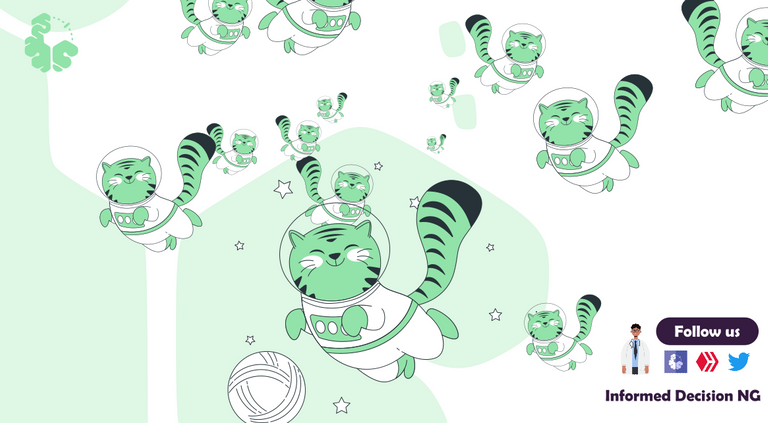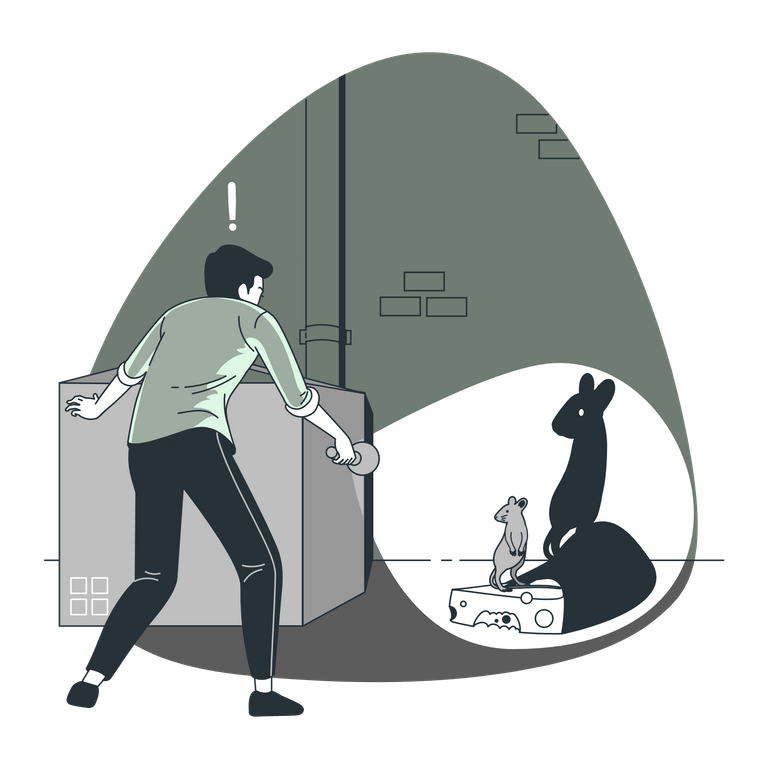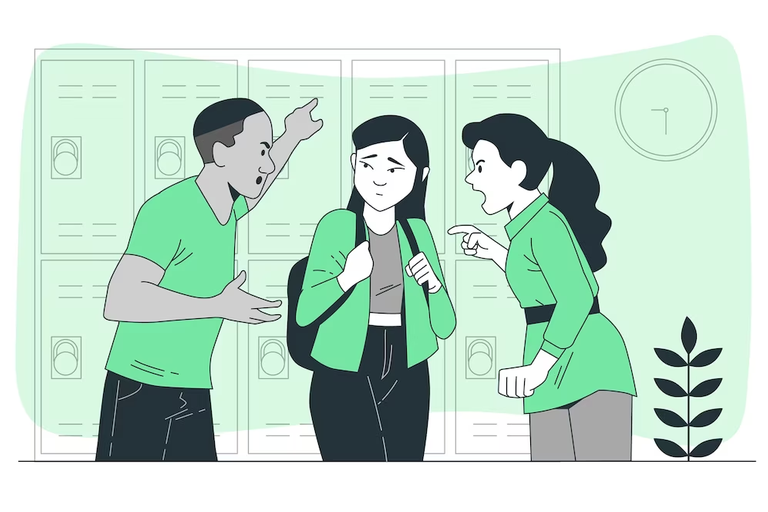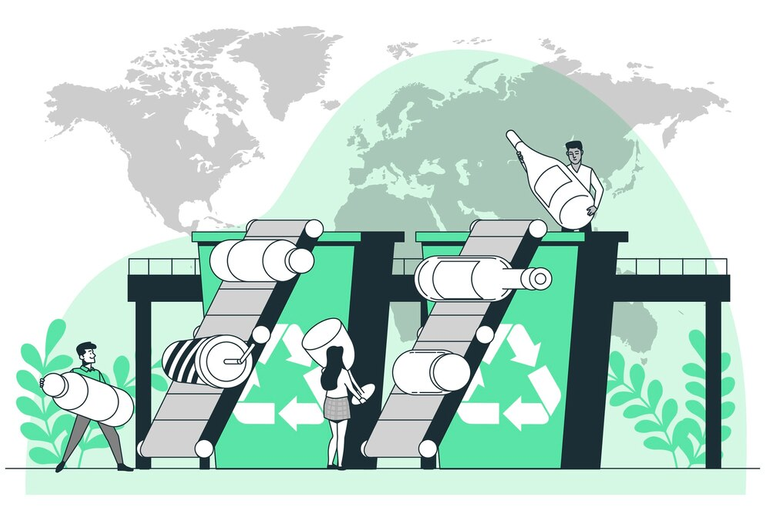
One of the most groundbreaking experiments in behavioral science that was done and repeated in the 1960s was the one done by Dr. John Calhoun, a behavioral psychologist, and ethologist.
Born on May 11, 1917, and growing up in the rural areas of Tennessee and Mississippi, John was very interested in biology and behavioral sciences, earning his bachelor’s degree in biology from the University of Mississippi and a PhD in psychology from Northwestern University in 1943.
His knowledge in these fields of interest put him in the perfect position to explore what could ever have been noticed by anyone other than him.
This experiment was designed by him, and he worked alone on it without any co-researchers. He, however, had support from the National Institute of Mental Health, which provided funding, and others who were researchers in the same field of animal behavior and psychology were influential and provided ideas.
Between 1960 and 1970, Dr. John Calhoun’s works were published in several scientific journals, most popular of which were “Population density and Social Pathology”, “Death Squared: The Explosive Growth and Demise of a Mouse Population,” and “The Death of a Monoculture.”
Overcrowding and social problems

The first experiment began in 1968. It was designed to understand the effects of overcrowding and social disorganization on the behavior and psychology of mice.
Dr. Calhoun created a self-contained environment for mice known as Universe 25. The environment was a 9-foot square enclosure that had everything mice needed to survive, including food, water, and shelter.
The experiment started with four pairs of mice, and they were allowed to breed and populate the space.
What Dr. Calhoun noticed when the mice began to grow was very scary and is the reason why this experiment is being re-conducted in modern times.
The overcrowding led to an increase in aggressive behavior, and many of the mice became isolated and “antisocial.”
The females were particularly neglectful to young mice, and over time, the population began to decline.
Over time, the population continued to grow, but the social structure of the mice broke down.
They started to form social groups among themselves, but the majority of the population were “outcasts” who were unable to be part of any of these social groups. The population began to decline very fast, and the mice began to be violent and eat each other.
By day 800, the experiment was ended as the mouse population had completely collapsed, and the last generation of rats were unable to form new offspring because of the abnormal behavior and traits that existed due to overcrowding.
The rapid increase and eventual collapse of a community of mice (the males):

In Universe 25, the maladaptive behavior exhibited by the male mice as the population density increased included increasingly aggressive and territorial behavior, while others became more withdrawn and passive.
Some of the males became very hypersexualized and engaged in behavior such as mounting and ejaculating on other males, while others displayed a lack of interest in mating.
Some males were only interested in grooming themselves and did not want to interact with other mice and were called the “beautiful ones.”
These were thought to be part of the problems with living in a dense population. This environment provided psychological stressors that had never been seen before.
In summary:
- Male mice showed increasing aggression and territorial behavior as the population density increased.
- Some male mice exhibited hypersexual behavior, such as mounting and ejaculating on other males, while others showed a lack of interest in mating.
- Some male mice became withdrawn and passive, only interested in grooming themselves and avoiding interaction with other mice.
- These abnormal behaviors were attributed to the psychological stressors of living in a densely populated environment.
The end of a single dominant culture (the females):

The females in Universe 25 also showed abnormal behavioral patterns as the population density increased. Some of the females became extremely aggressive and began to fight other females, injuring and killing some. This was usually over resources like food, water, and nesting sites.
Females were noted to be over-grooming, nest-building, and nursing, even when they were not pregnant.
Other females exhibited a lack of maternal behavior towards their offspring, often abandoning or even killing their young shortly after their birth.
The females were also hypersexualized in a similar manner to the males and were seen to mount and attempt to mate with other females.
In summary:
- High aggression levels were observed among some female mice, leading to fights and even killings of other females over resources.
- Some females engaged in excessive grooming, nest-building, and nursing, even when not pregnant.
- Other females exhibited a lack of maternal behavior, abandoning or killing their young soon after giving birth.
- Hypersexual behavior was also observed among some female mice, including attempts to mate with other females.
The Future was broken (the young):

In this experiment, the young that were reared without the care of their mothers also had abnormal behavior. The young mice exhibited behavior like self-mutilation, lethargy, and failure to thrive.
The mice were socially withdrawn, and when they reached adulthood, they continued this social behavior and spent most of their time alone.
The young male mice were not interested in sex and did not initiate mating rituals with the females. The males were also very aggressive, attacking other mice at the slightest inconvenience.
The females lacked maternal skills as they grew and would also neglect their young as they grew.
Overpopulation among humans:

Dr. Calhoun’s argument was that the abnormal behavior seen in Universe 25 was a result of overpopulation and overcrowding. His thoughts were that when there is overcrowding, it would lead to stress and disruption in nature that eventually breaks down social structures and emerges in abnormal behavior.
In this experiment, there were no genetic abnormalities or psychological defects in the mice. They were simply responding to the environment.
Dr. Calhoun, who grew up in a more rural setting, criticized the urban population, saying that his experiment could be the fate of the urban population due to overcrowding.
Many researchers do not agree with his conclusion of his research. Some have attributed the behavior to inbreeding or genetic predispositions, and the effects of overcrowding may have been overstated.
Mouse opinions:
Imagine if the mice in this experiment could talk and give their thoughts on what the experiment was all about. What would they say
Many groups have used this experiment as a talking point to stress their point and have used it to represent the fate of Western culture. Those on the political right have used it to fight for more conservative policies and advocate for stricter social norms and traditional values, and those who are more liberal have used the experiment to fight for social welfare programs and call attention to the negative effects of income inequality and social fragmentation.
What type of mouse are you?
Looking at this experiment and its results, what are you cautious about? Do you fear a breakdown of social norms and the effects of social policies related to gender and sexuality? Do you think that the breakdown of social structure is a major problem in Western society and that returning to traditional values will prevent social collapse?
Or are you on the other side of the spectrum of thought? Do you believe that this could be the effect of a lack of social welfare programs and a call for attention to the negative effects of income inequality and social fragmentation? Do you believe that we are overcrowded, and this could lead to isolation, violence, and other negative outcomes?
Do you think social policies promote social cohesion, reduce income inequalities, and prevent societal collapse? Or maybe you are on the other side of all this and all you're thinking is, 'Wow, cool experiment bro!'
Limitations of this experiment
The experiment was a groundbreaking study in the field of behavioral psychology, but it still had its limitations that are worth considering when evaluating its application to human populations.
The most important of these is that it was conducted in a controlled environment that was vastly different from the natural habitat in which mice normally live. Therefore, the behavior observed may not be representative of that seen in wild mice populations.
The population density was artificially high and much higher than what is typically achievable in normal mouse populations.
The experiment lacked genetic diversity among the mice. The experiment started with only four mice, which were used to build the entire population. It would have been a better representation of what is seen in the wild if multiple species were involved.
The experiment was devoid of predators and diseases, which may have played a role in the mice's behavior. Mice in the wild have to fight back against these factors to survive.
The experiment was not conducted for a long enough period of time to observe the effects of overpopulation and density over an extended duration.
In the coming weeks, we will discuss other interesting experiments like this one that have changed the way we view behavioral science. Stay tuned to Informed DecisionNG.
Conclusion
In conclusion, Dr. John Calhoun's groundbreaking experiment in behavioral science, conducted between 1960 and 1970, aimed to understand the effects of overcrowding and social disorganization on the behavior and psychology of mice. Dr. Calhoun's experiment, which involved creating a self-contained environment for mice known as Universe 25, revealed some disturbing findings.
The overcrowding in Universe 25 led to an increase in aggressive behavior, and many of the mice became isolated and "antisocial." The social structure of the mice broke down, and they started to form social groups among themselves, but the majority of the population were "outcasts" who were unable to be part of any of these social groups. The population began to decline very fast, and the mice began to be violent and eat each other.
Dr. Calhoun's experiment showed that overcrowding and overpopulation could lead to psychological stressors that can cause abnormal behavior and eventually lead to the breakdown of social structures in any species, including humans.
Therefore, Dr. Calhoun's experiment and findings are a cautionary tale and serve as a reminder of the importance of understanding the impact of overpopulation and overcrowding on social structures and behavior. It is crucial to take measures to prevent overcrowding and ensure that social structures remain intact to avoid the emergence of abnormal behavior and the breakdown of society.
Have you ever heard of Dr. John Calhoun's experiments with mice before? What do you think about them? Do you think the findings of Dr. Calhoun's experiments with mice could be applied to human behavior and society? Why or why not?
What implications do you think these experiments have for understanding the effects of overpopulation and overcrowding on social behavior and mental health? In your opinion, what are some potential solutions to prevent the negative effects of overcrowding on social structures and behavior?
How do you think the results of these experiments could inform our approach to social and urban planning? What are some ethical considerations to take into account when conducting experiments like these on animals?
How might these experiments impact our understanding of the role of environmental factors on the development of abnormal behavior and mental health issues? Do you think it would be ethical to conduct similar experiments with humans? Why or why not?

Yeah this crowding thing is quite interesting, and one can only wonder how it impacts people. I had noticed this phenomenon in animals myself when I was a kid because of a fish aquarium my mom had. When there were just a couple fish, they became very territorial, fought all the time to the point of death and fiercely guarded their areas. But when you put a lot of fish in, of the same exact kind, they behaved completely peacefully! Just swam next to each other like nothing's the matter. It was so strange that it stuck in my memory, even though all other details have vanished, like what type of fish they were.
Nice... I think I saw a similar experiment done too.
Is it far stretch to say this applies to humans?
No, not a far stretch at all. I remember reading or listening to biologists saying we used to live in small groups of people where everyone knew each other, and they went on to hypothesize on how this might affect our current behavior and psychology. For instance, in a small group it makes sense to compare ourself to others, since everyone can be your, say, sexual rival; but it doesn't make sense to compare ourselves to rich famous people who live in other countries and who will never compete with us for a mate or a job or a position, but we can't help but do exactly that, because our brain thinks everyone we see is a member of our small village.
Wooow, I've never seen it this way. Technology has really made the world a global village. I could like to see the literure on that...Its stuff like this I love to read...behaviour intrigues me.
When we talk about behaviour, we necessarily talk about socialising. Although these two concepts can live well without each other, they are also incredibly interrelated. The experiment you describe here demonstrates this hypothesis. And in fact, from its results, we can conjecture many questions that help us to understand the way we act. Brilliant post, my friend.
Hmmmn...much of our behavior matters in the social realm wouldn't you agree? People don't even conceptualize the pain of death in suicide...it's the pain of others who are left behind that is so easily understood.
But I understand what you are saying... I've never had to think about it. Thank you for that.
This experiment is very thought provoking I'm glad I stumbled across it.
It was probably not the space. Calhoun repeated the experiment multiple times, even with rats. We see rat populations that are much more crowded.
The "unnatural" part is socialistic care. Hence "Utopia" Those mice have everything material that they need 24/7. We, see such a population collapse already. Here in Germany, the human Utopia, the native population is on a decline for some decades. Japan, Portugal, Taiwan and many other rich industrial nations face the same problem. By 2016 1,8 Million Japanese people lived in self-chosen isolation (Hikikomori). People are already mentally ill.
Politicians think they can solve it by mass migration. And initially, you see a spike in birth, but after a few years, the birth rate among refugees and migrants declines.
Also, very valid take. Calhoun even as a person who grew up in a more rural settlement in America believed more in the human spirit to tolerate each other but he was critical about people having no economic value in society and simply being benefactors of the system.
His recommendations were more like, people should get jobs and have something to do in society
Lieber lauch3d,
ich hoffe es geht Dir gut und Du bist wohl auf.
Ich wünsche Dir und Deinen Liebsten ein frohes und besinnliches Weihnachtsfest.
Bleib gesund und munter und komm gut rüber ins neue Jahr.
Du findest mich im übrigen wieder auf steemit.
Herzliche Grüße.
Na da hat es sich doch gelohnt hier rein zu schauen. Das wünsche ich dir auch lieber Indextrader24, feiert schön, dieses Jahr hoffentlich ohne Arbeitseinsätze.
Dann besuche ich dich im nächsten Jahr auf Steemit.
Weihnachtliche Grüße!
Sehr geehrter Herr lauch3d
sie scheinen über eine excellente Allgemeinbildung zu verfügen. Haben sie schon mal daran gedacht als Fachkraft für unsere Demokratie tätig zu werden?
Weitere Auskünfte erhalten Sie dazu beim Weihnachtsmann im Bundeskanzleramt.
Wir wünschen ein frohes Fest und für 2024 alles erdenklich Gute.
Es wäre uns eine Ehre sie im nächsten Jahr weiterhin bei uns begrüßen zu dürfen.
TBK
!invest_vote !LUV !PIZZA !wine !WITZ !LOLZ !HUGH
@indextrader24 denkt du hast ein Vote durch @investinthefutur verdient!
@indextrader24 thinks you have earned a vote of @investinthefutur !
!invest_vote !LUV !PIZZA !wine !WITZ !LOLZ !HUGH
lauch3d, indextrader24 sent you LUV. 🙂 (1/5) tools | trade
Made with LUV by crrdlx.
This is pretty fascinating. It's always interesting how easily we can connect the oucomes of these experiments with us humans and society. It seems like some fundamental features of societal behaviour go right down the evolutionary chain. We see such things as torture, slavery, capitalism, war, farming, sacrifice, and more in societies of other apes, even ants.
But tbh, I don't need a research paper to tell me overcrowding is a bad idea! Give me space or give me death heh.
Yeah, there a lot of relatable behaviour that can be seen among animals and humans...some go down to our genetics.
This is why in the bible, some animals were sacred and not to be killed for food...The religious leaders wanted people to learn from them...like snakes, animals with paws and the like.
Lol, your view of having space is probably the more popular one...
Thanks for your contribution to the STEMsocial community. Feel free to join us on discord to get to know the rest of us!
Please consider delegating to the @stemsocial account (85% of the curation rewards are returned).
You may also include @stemsocial as a beneficiary of the rewards of this post to get a stronger support.